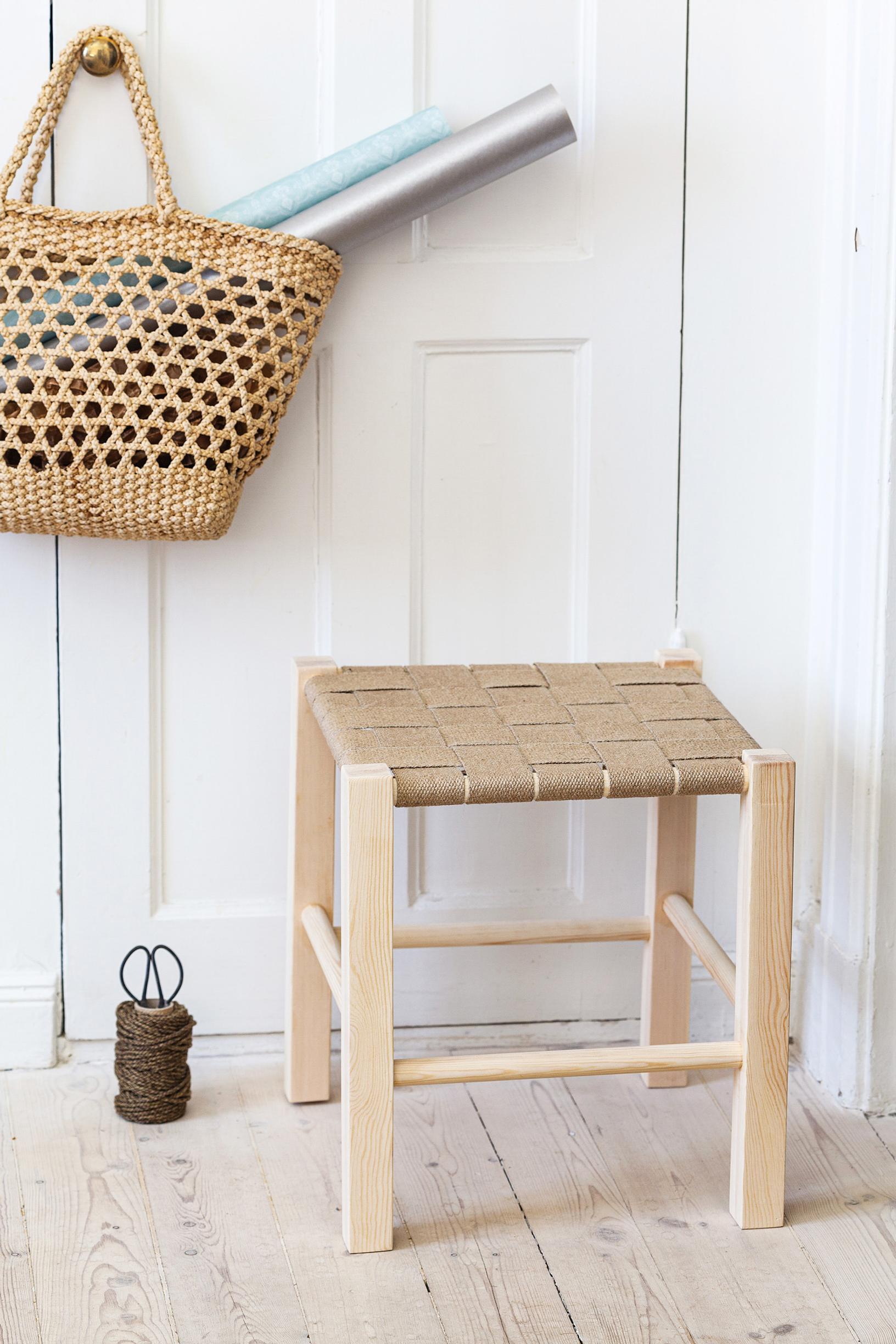
Woven stool: a beautiful classic—weave this flexible yet sturdy seat from jute webbing
A woven stool has a timeless style. The frame is made from pine slats and dowels, with a seat woven from jute webbing. Use it as extra seating or a handy side table!
Woven stool—materials:
- Pine slats, 21 × 24 mm, 4.8 m
- Pine dowels, diameter 24 mm, 8 × 34 cm
- Jute webbing, width 60 mm, 5 m
- Tacks, 13 mm
- Outdoor wood glue, Cascol
- Clamps
- Drill
- Forstner bit (diameter 24 mm)
- Finishing sander
- Magnetic hammer
- (Webbing stretcher)
Woven stool—instructions:
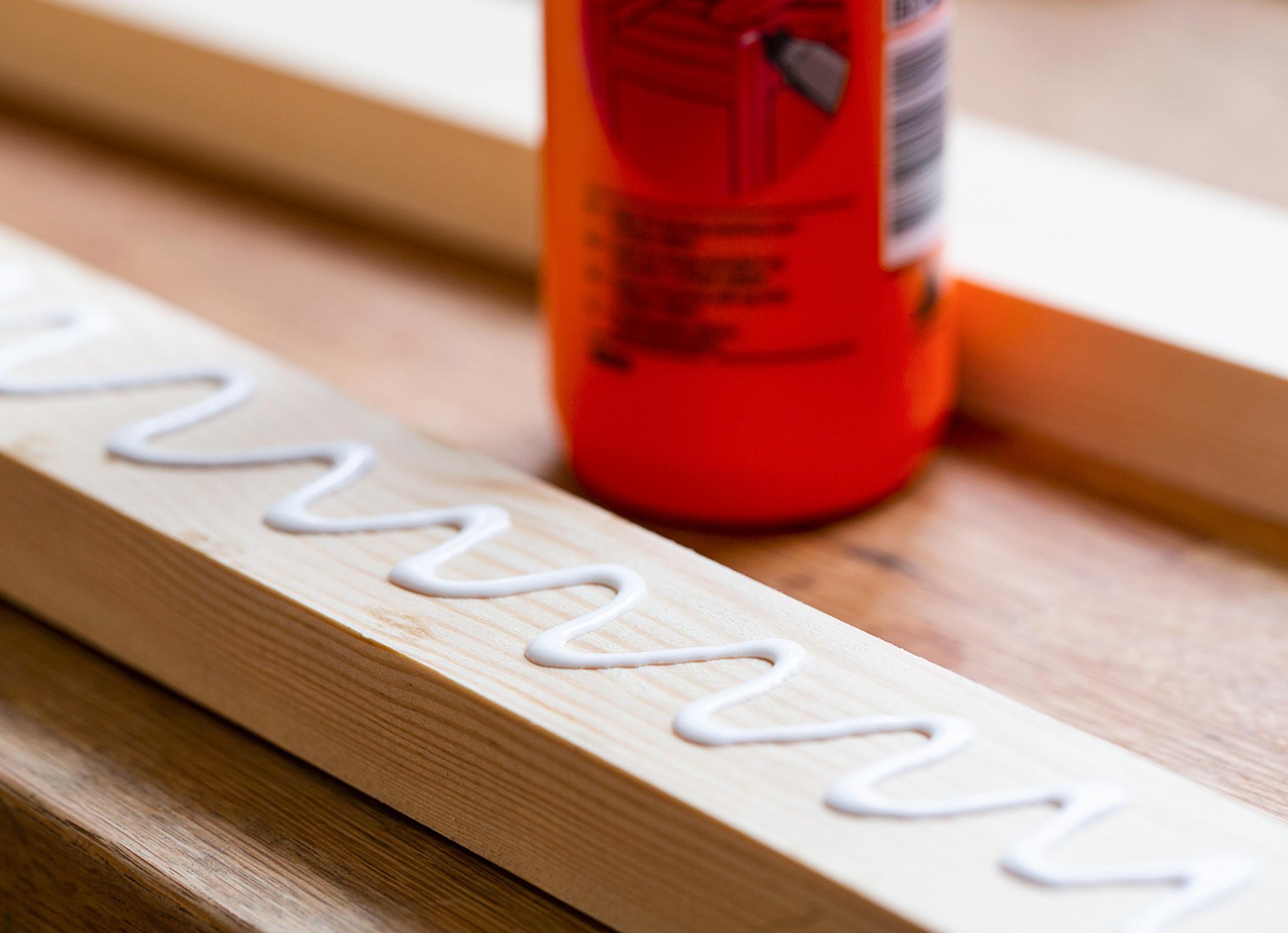
1. The stool legs are made from 21 × 43 mm pine slats that are 1.2 m long. For this project, you’ll need 4 × 1.2 m slats. Start by gluing two slats together, which will give you a finished leg with dimensions of 42 × 43 mm.
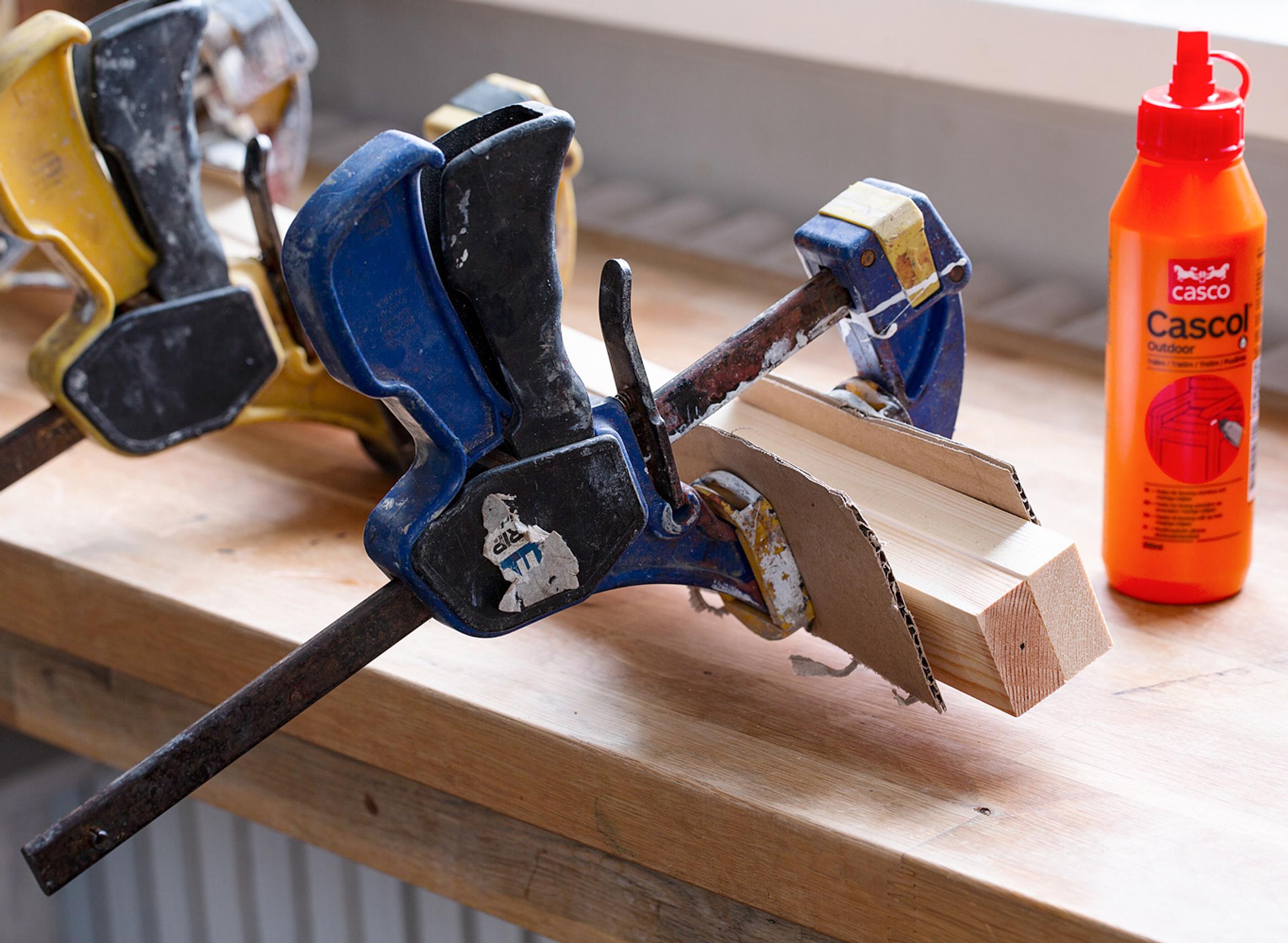
2. Use plenty of wood glue and secure the pieces with several clamps at regular intervals. Put a piece of cardboard between the clamp jaws and the wood to prevent indentations. Wipe away any excess glue that seeps out with a damp cloth.
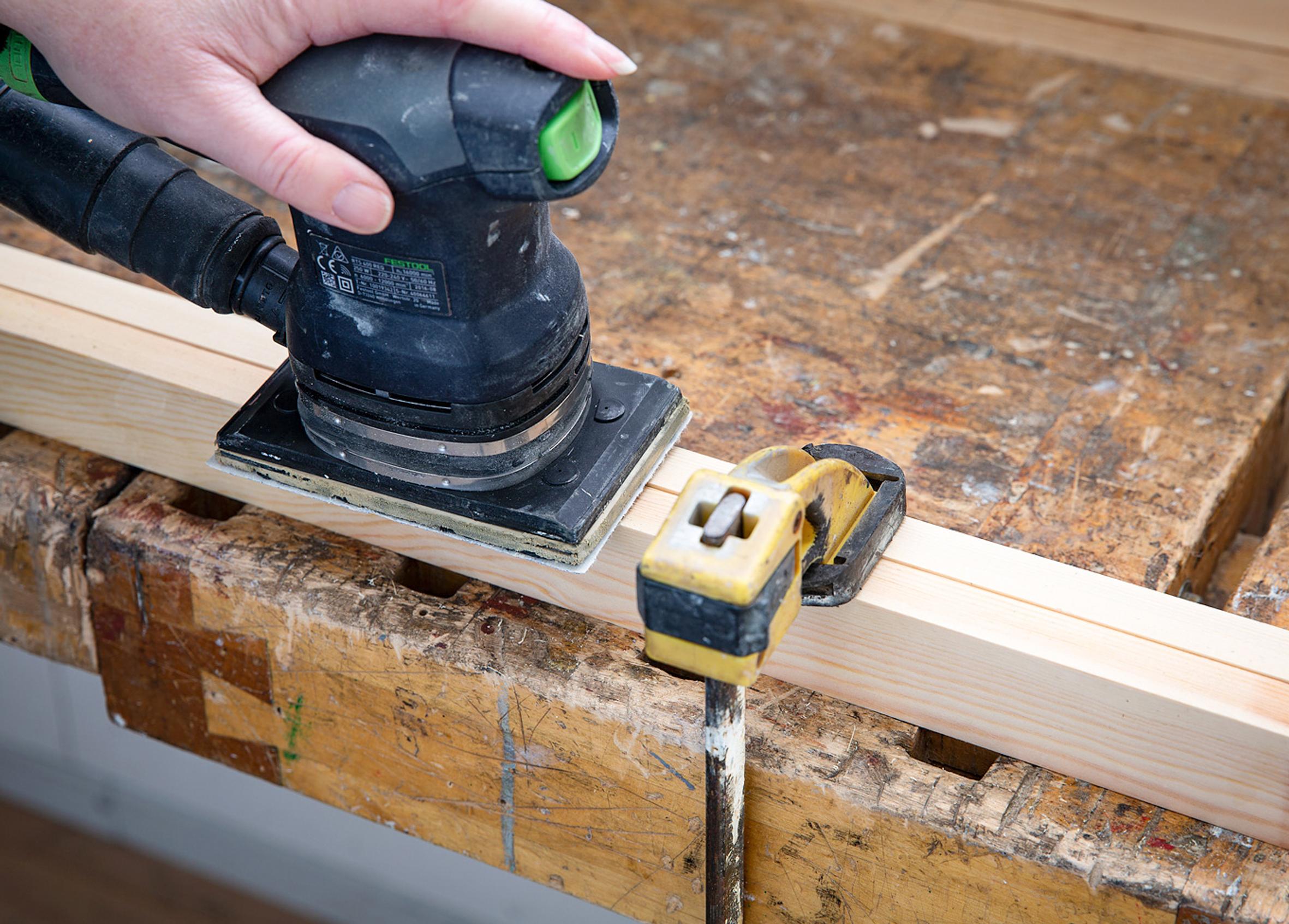
3. When the glue is completely dry, sand the joints until they’re perfectly smooth.
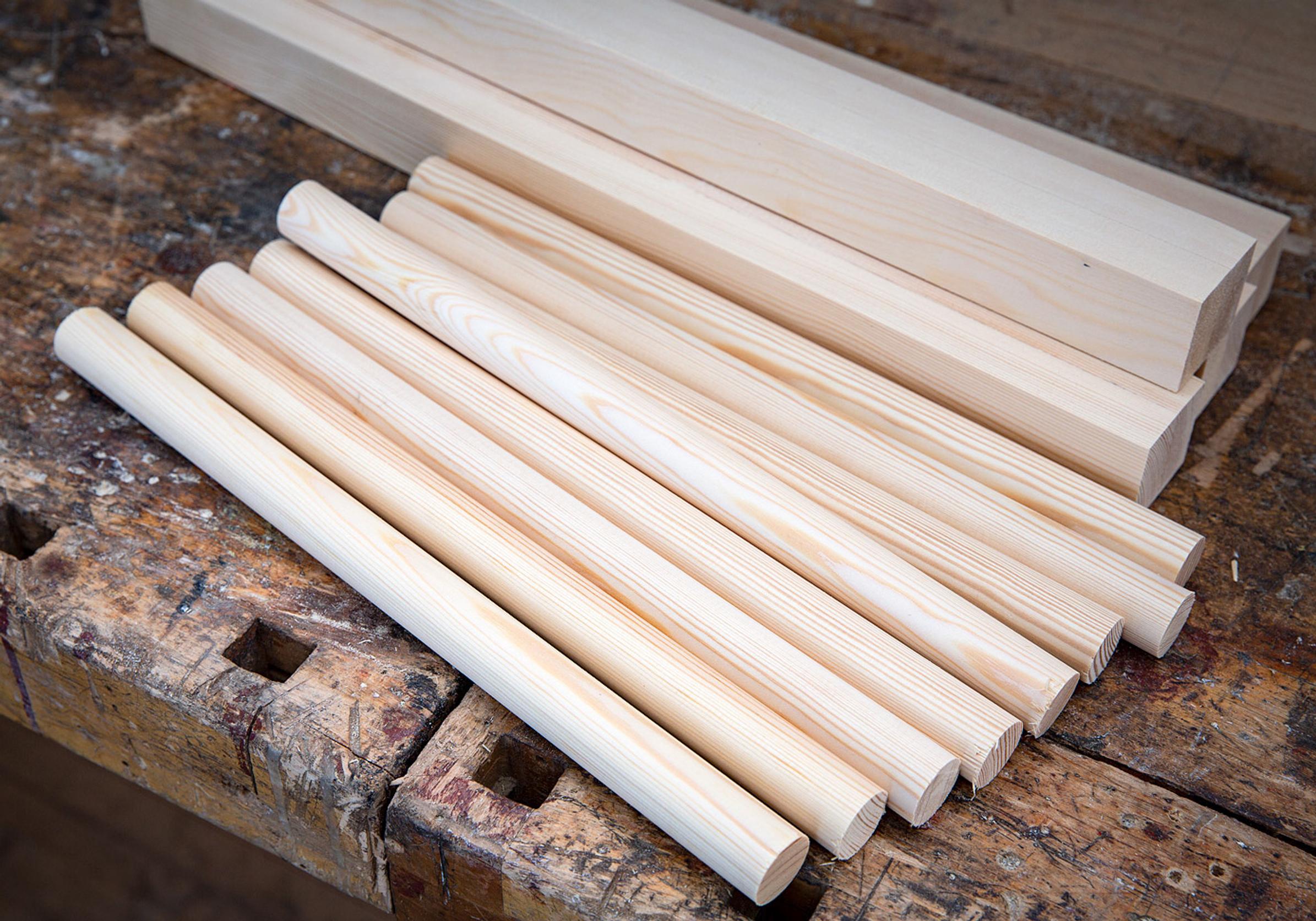
4. Cut the slats into four 44 cm pieces for the legs. Sand the corners and edges. Then cut the 24 mm dowels into 8 pieces, each measuring 34 cm. (They’re cut from 90 cm dowels, so you need 4 × 90 cm dowels.) Measure carefully so all pieces are exactly the same length.
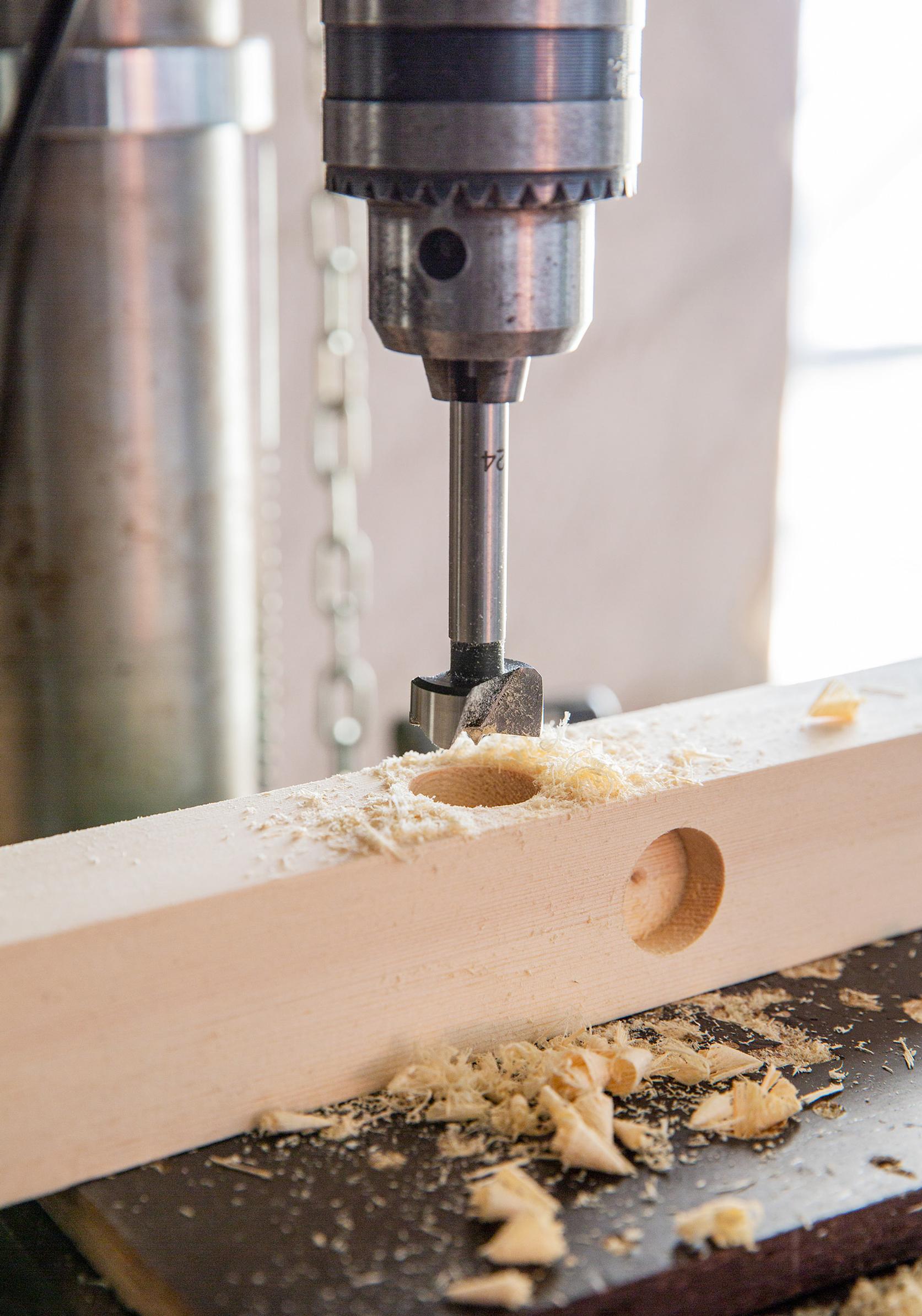
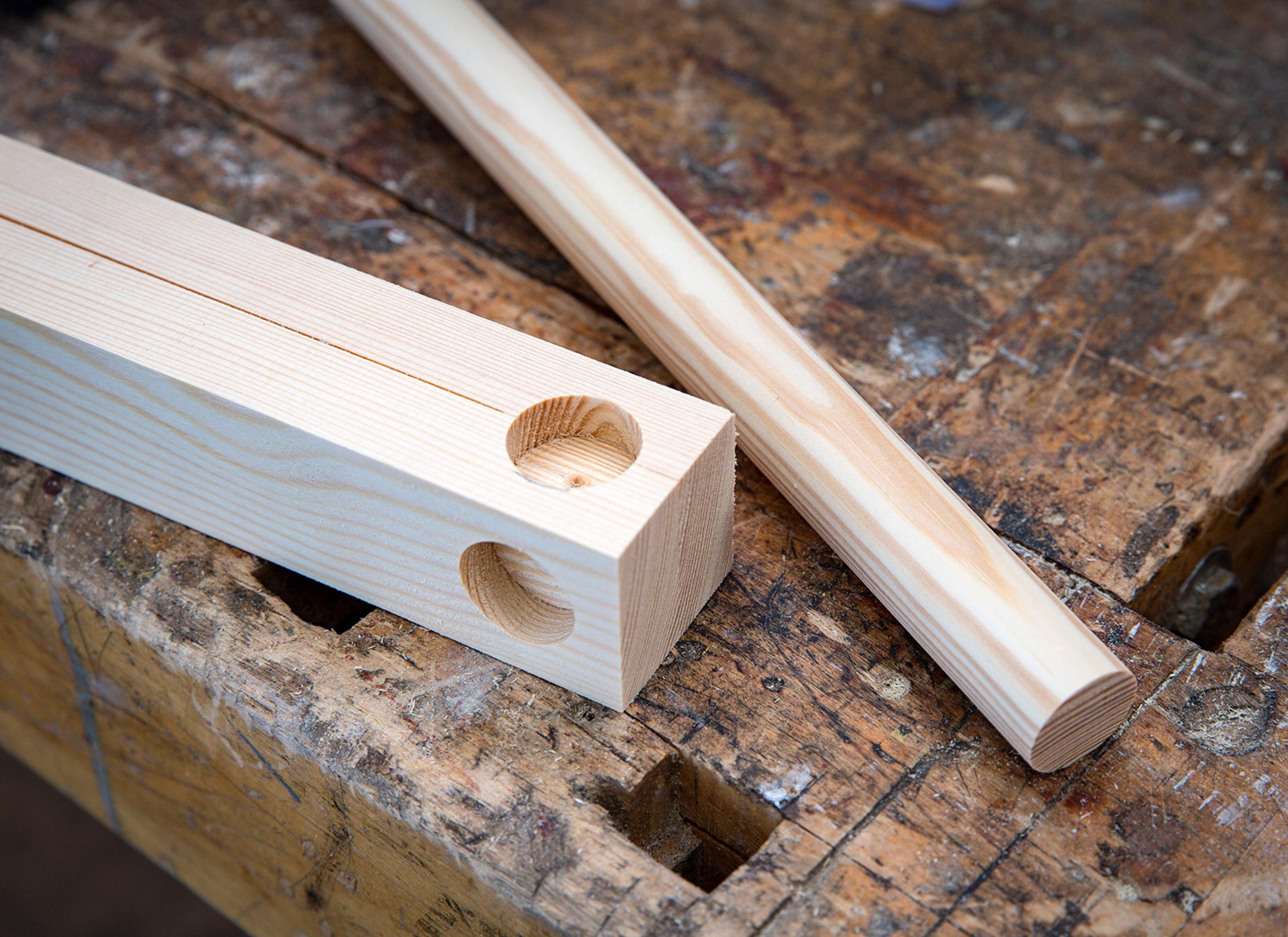
5. Drill holes in the legs for the dowels. Mark each hole position with a pencil. The top holes go on two adjacent sides, 22 mm from the edge at the center of the leg. The holes for the middle rails go 16 and 19 cm from the bottom edge. Use a 24 mm Forstner bit and drill to a depth of 1 cm (mark this on the bit with painter’s tape). Drill all holes to the same depth so the stool stays straight.
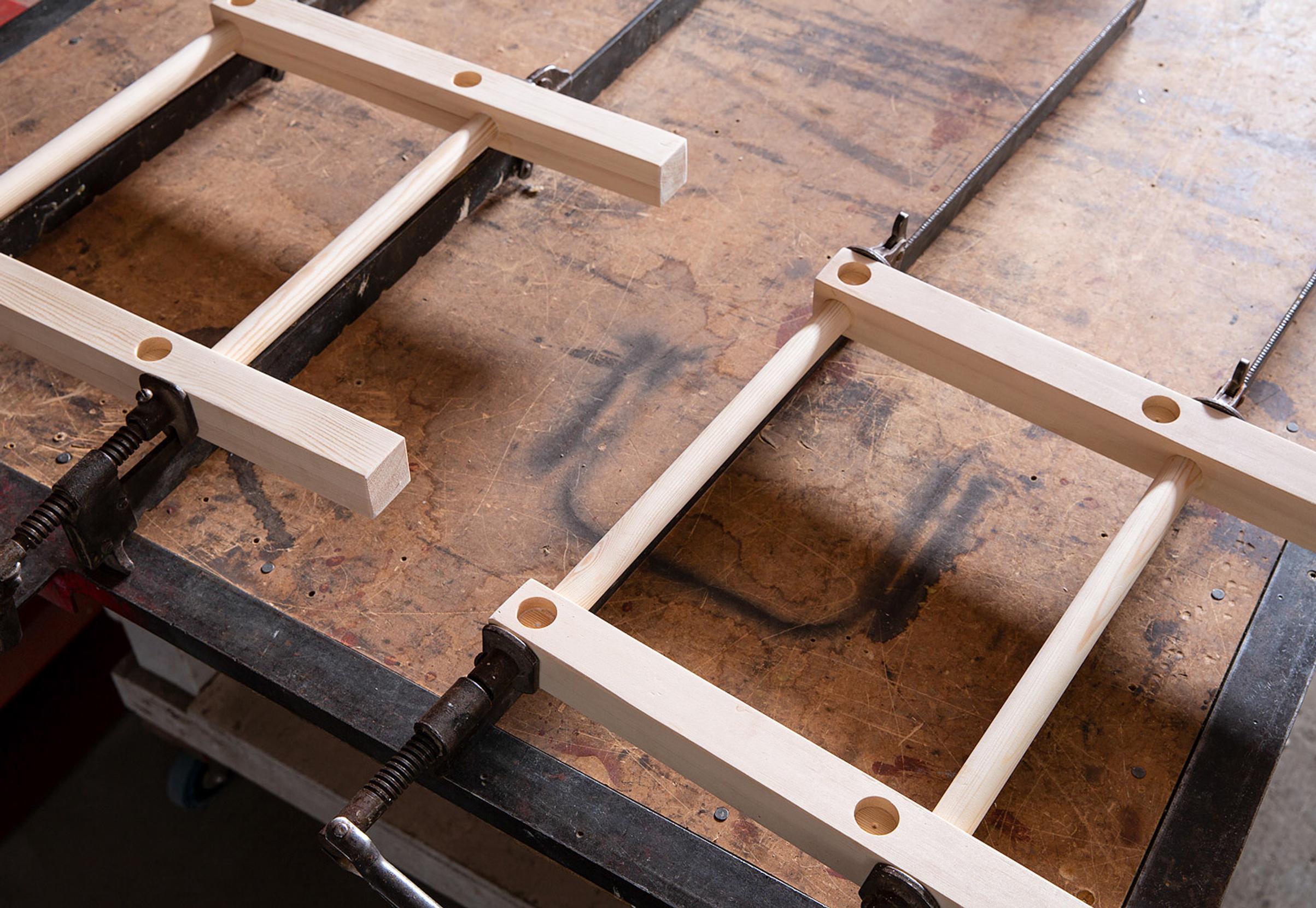
6. Glue legs and dowels together to form the end pieces, as shown. Clamp them and let the glue dry thoroughly.
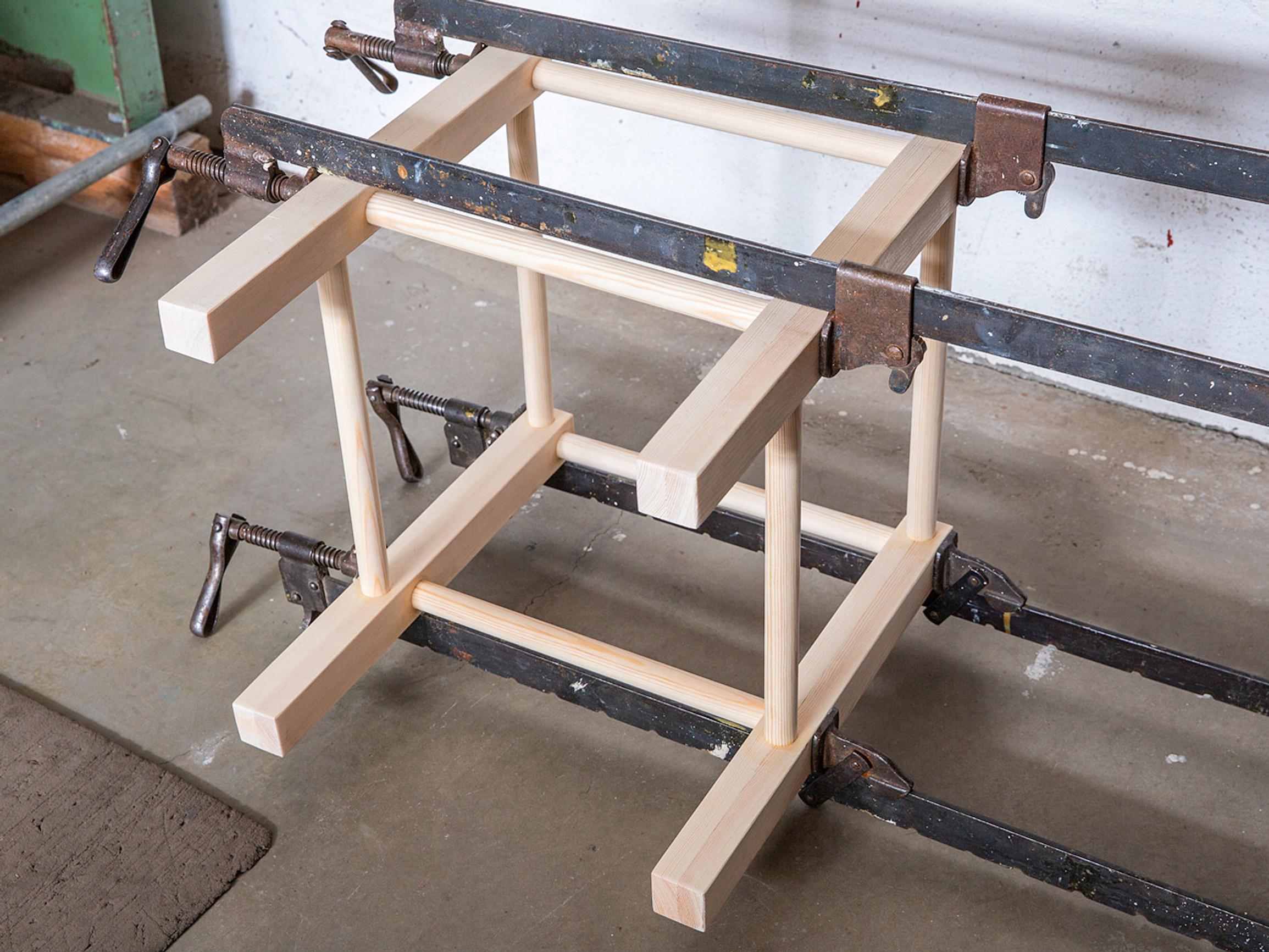
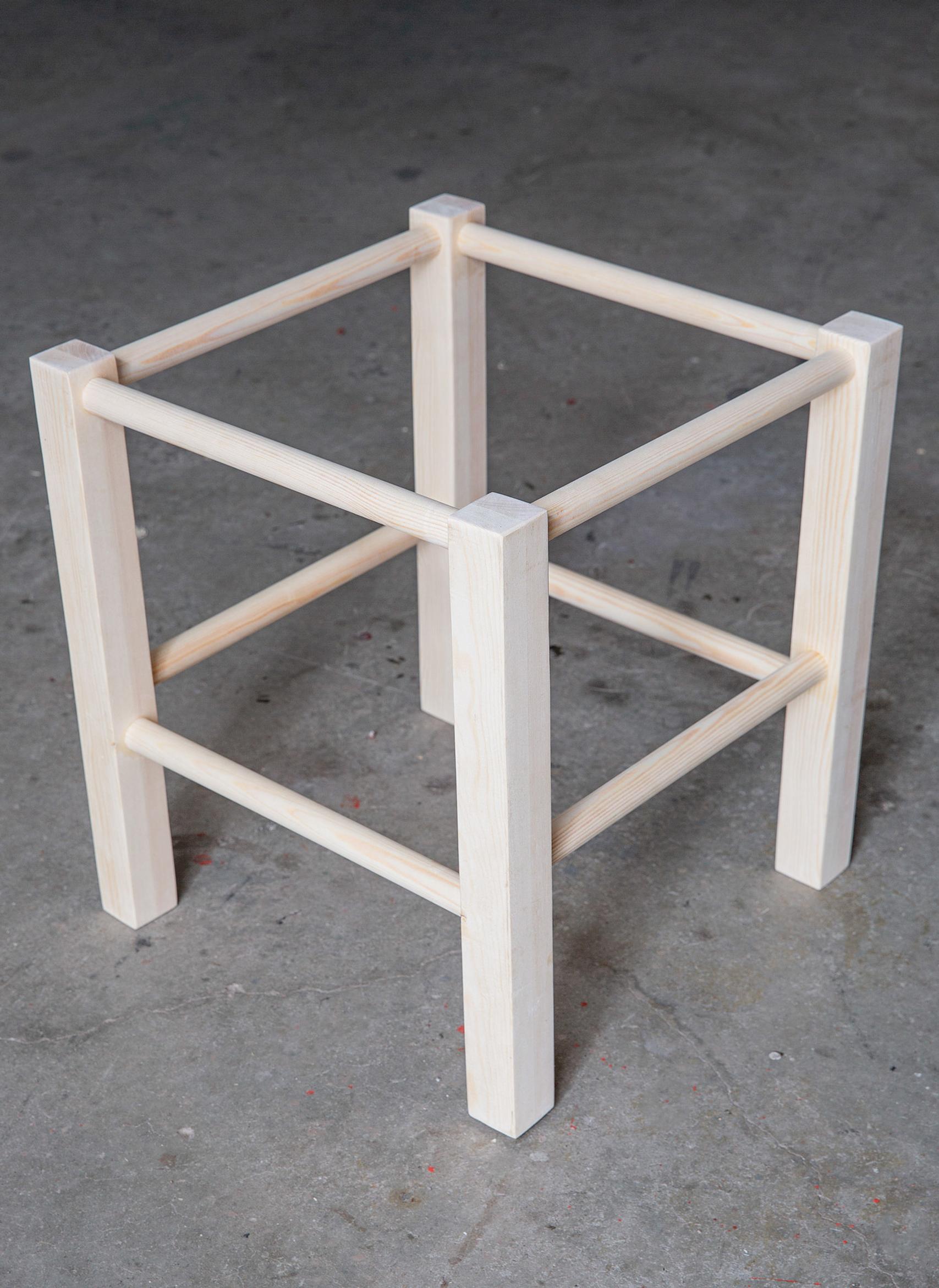
7. Glue the end pieces together with four dowels. Clamp again at the dowels and wait for the glue to fully dry to ensure a sturdy frame.
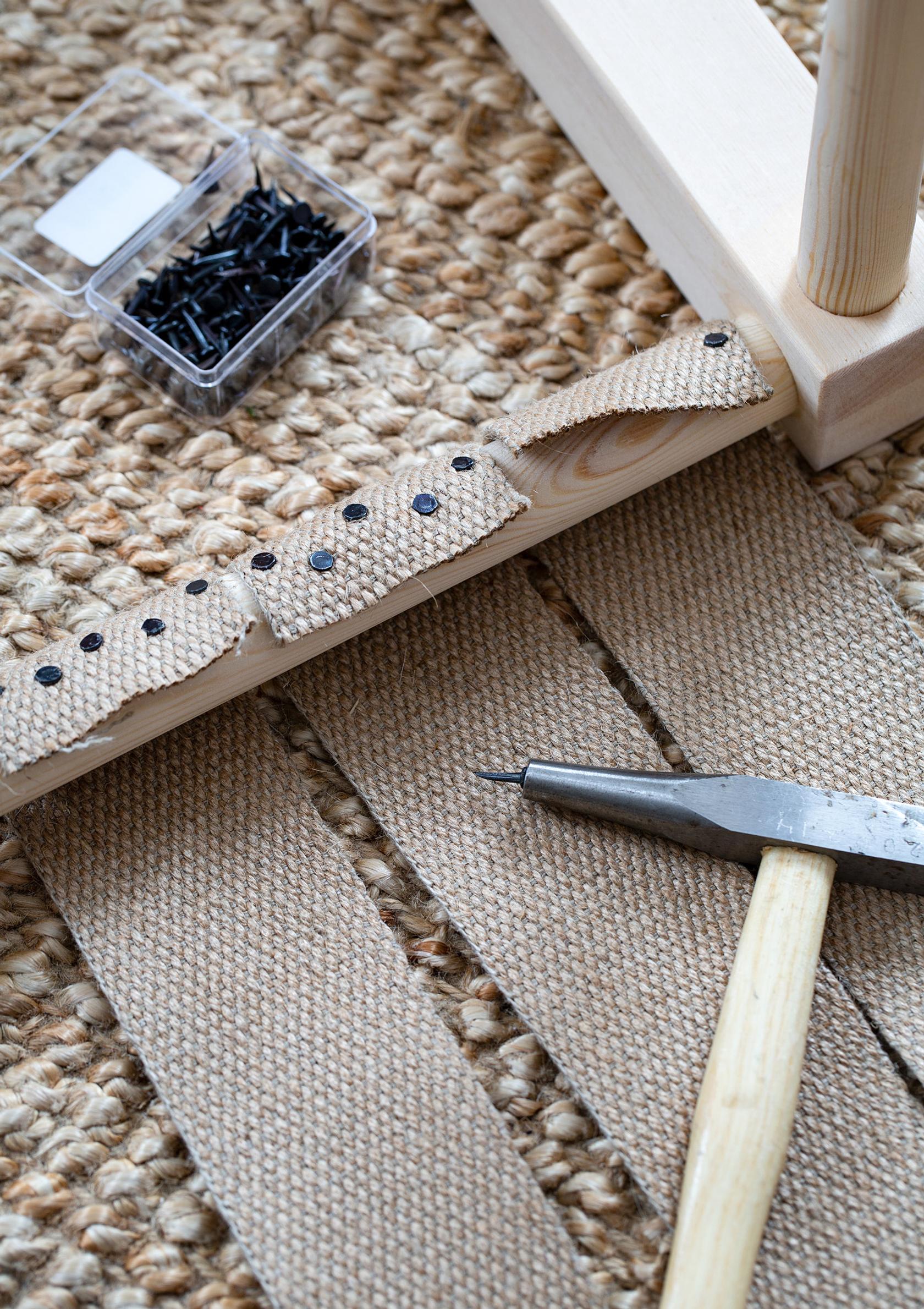
8. Measure the length of jute webbing needed (about 50 cm). The length should be enough to wrap around the dowels on both sides. Cut 10 strips of webbing to that length. On one side of the stool, attach the strips under the dowel with tacks, leaving a small gap between strips. A magnetic hammer makes it easy to handle the tacks.
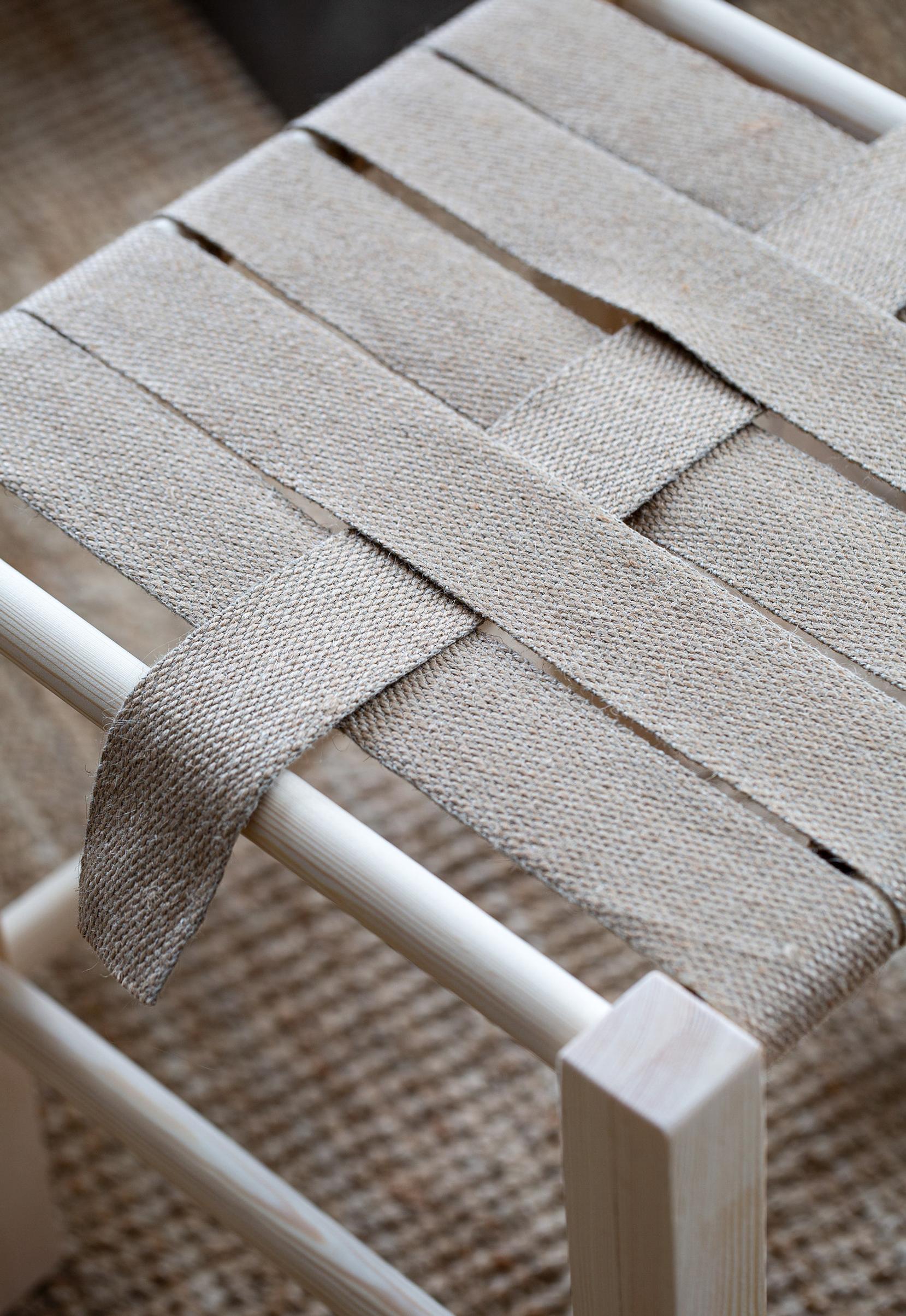
9. Pull the strips tight and tack them on the opposite side. Then attach strips going in the other direction around one dowel.
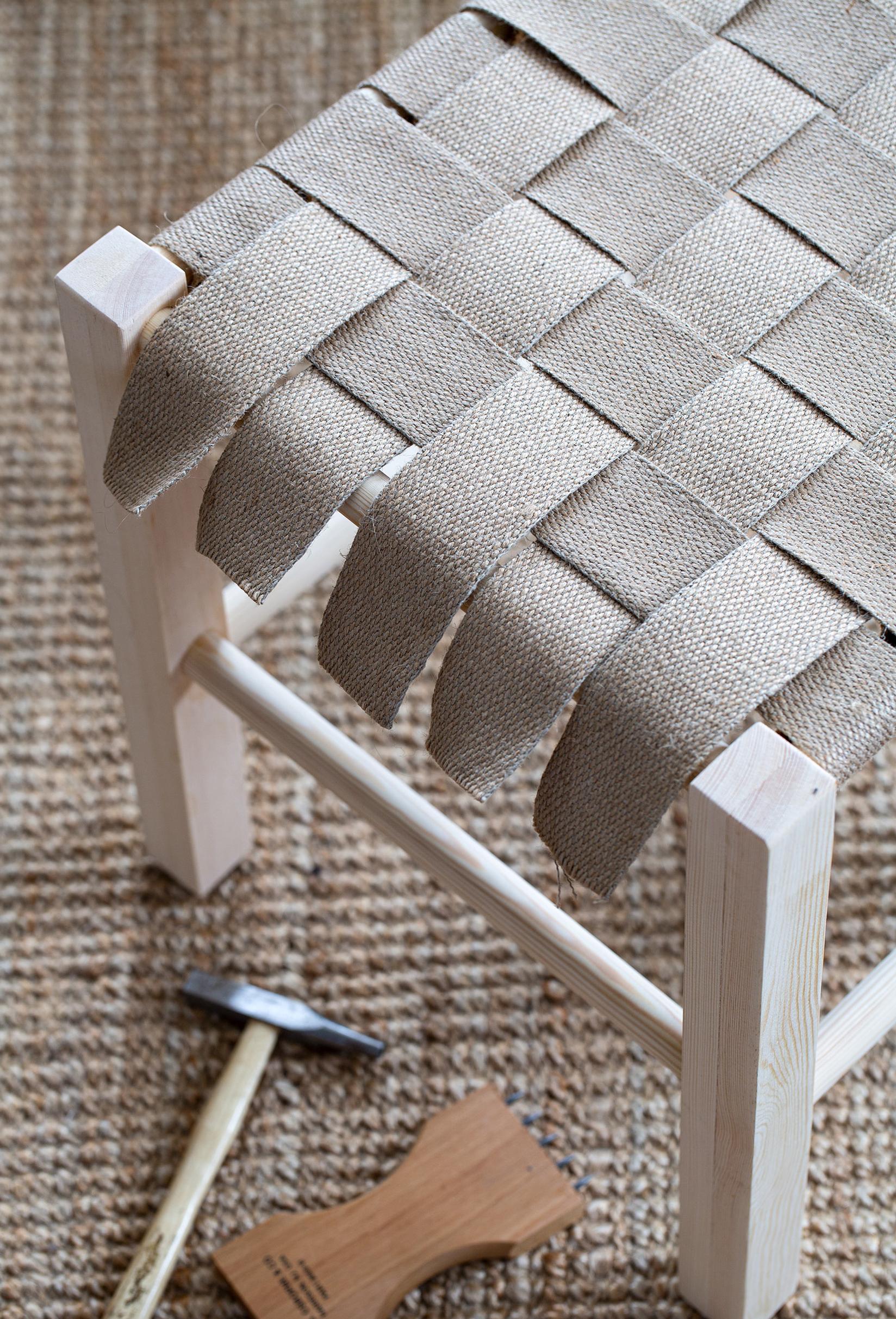
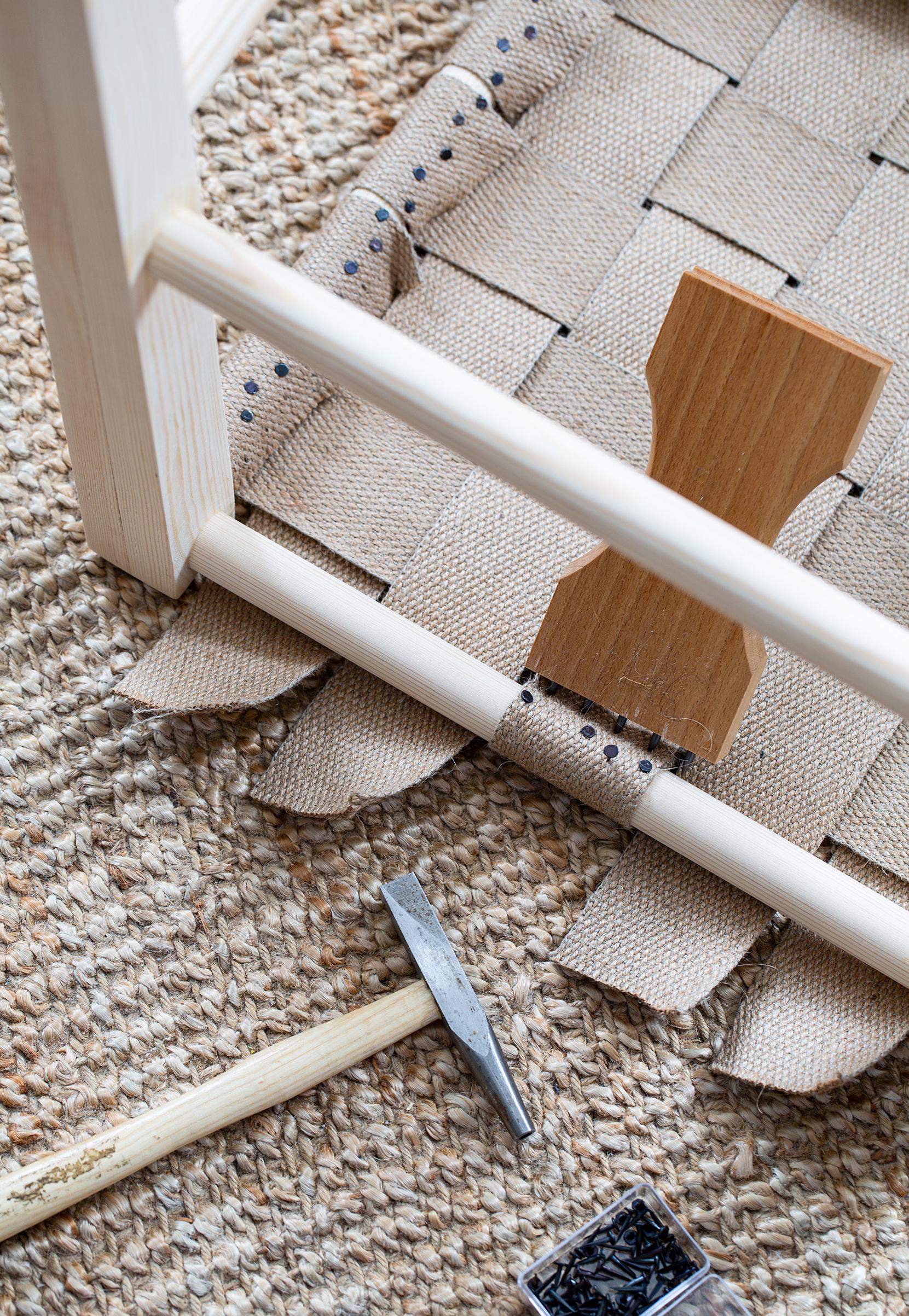
10. Weave the strips over and under in alternating rows, as shown, before tacking them on the other side. You can use a webbing stretcher to ensure they’re pulled tight enough.
Tip!
Try weaving the stool seat with leather strips as well.
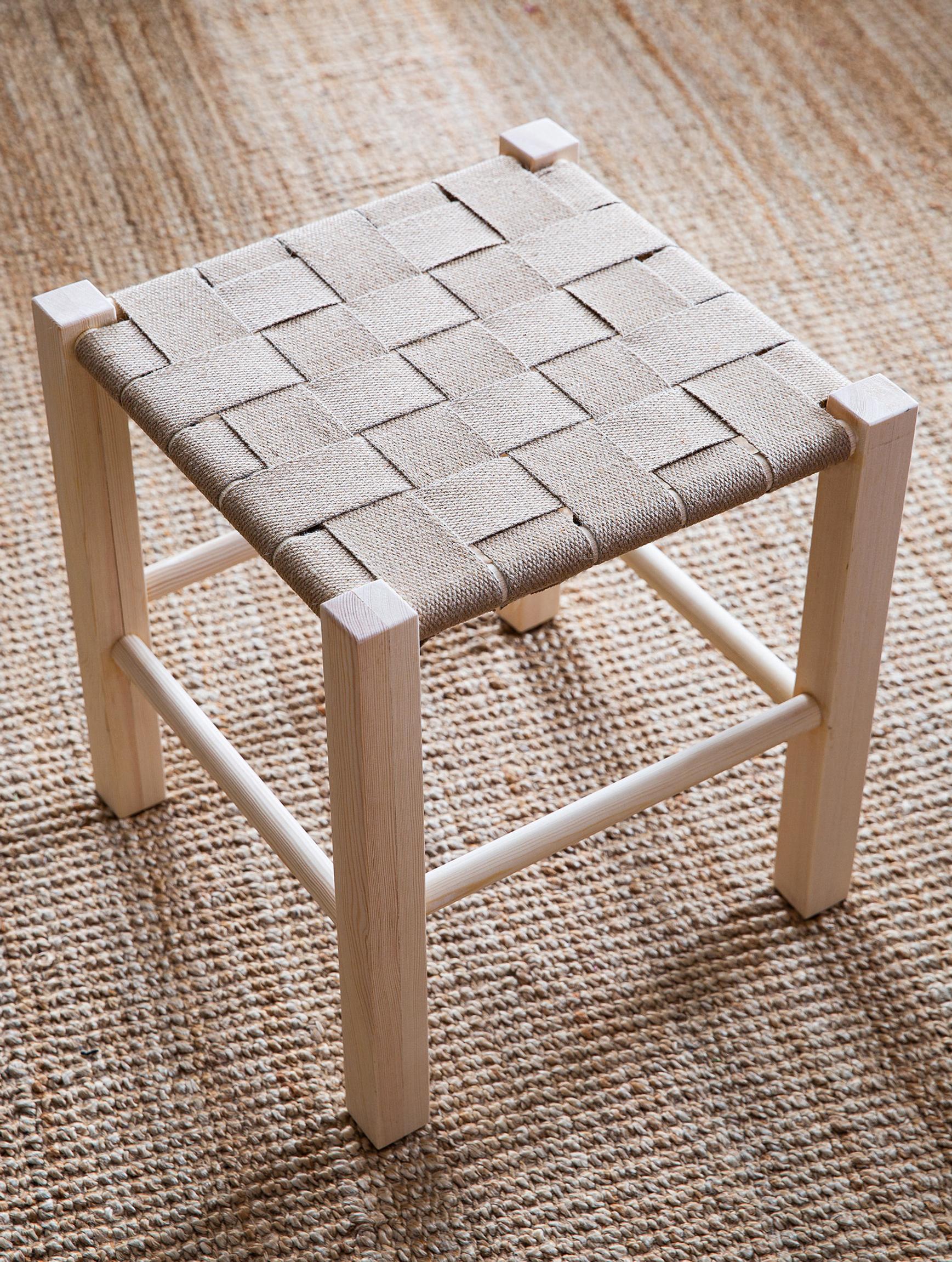
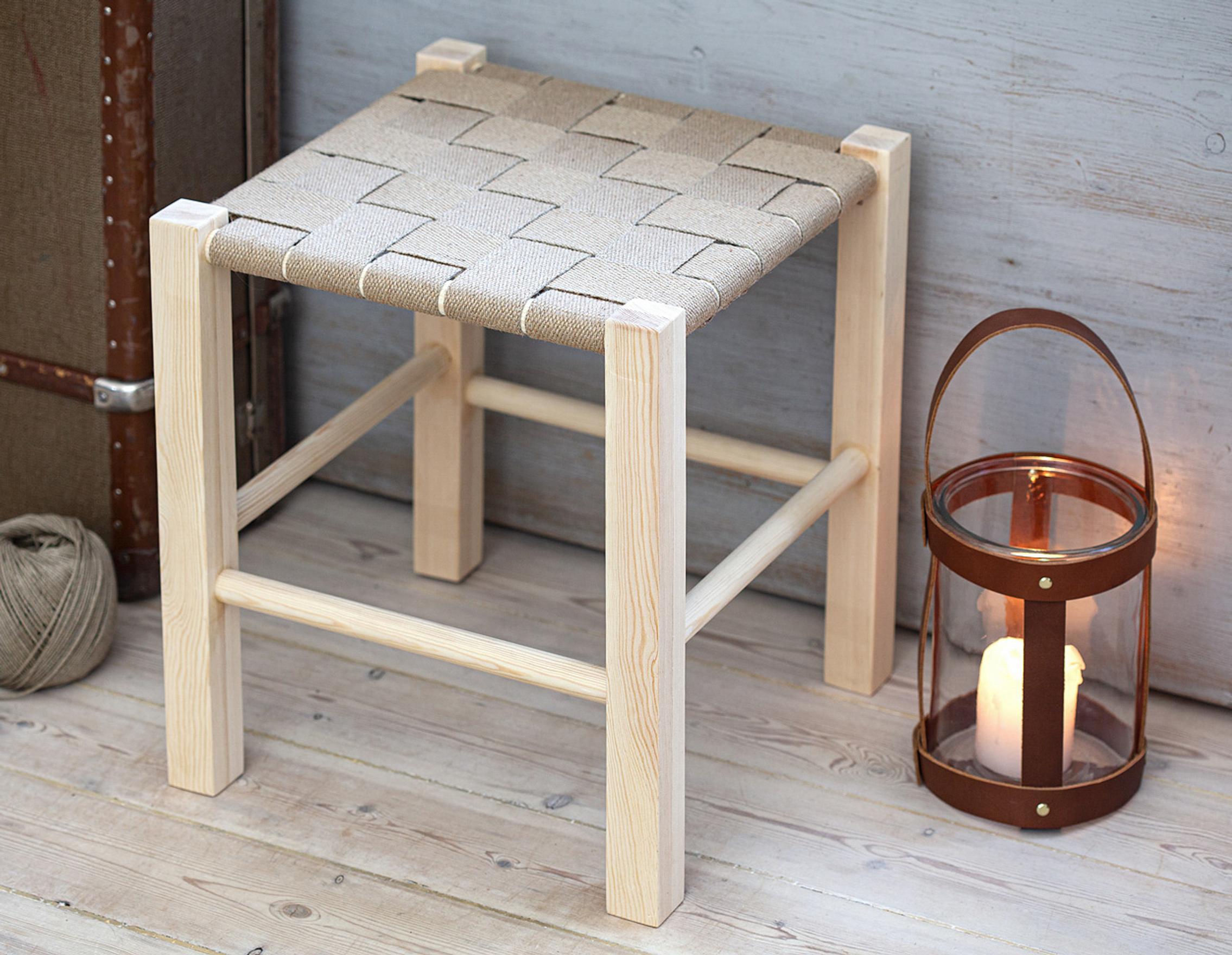
Instructions, photos, and materials by Slöjd-detaljer.


